To make sense of the information about their customers, many marketing teams create persona examples that represent an average buyer from one or more target groups.
Personas are profiles detailing average customer’s name, age, income, education, occupation, lifestyle, and attitudes, and their primary goal is to give research numbers a “human form” so marketers could personalize their strategy more easily.
While personas can be extremely useful, personas done wrong can seriously hamper your vision and harm your marketing efforts. Before we move on to persona examples, let’s run through the dos and don’ts of creating an effective persona.
Build Your Email List By 100K This Year Using Quizzes
What makes a good persona
For starters, an effective persona is:
- Realistic and believable
- Representative of a target group
- Based on research, not assumptions
- Showcases the customer’s needs and expectations
Where to find information
To create the realistic and representative persona examples for the groups you target, you need solid data. Your initial marketing efforts may be based on assumptions and your own expectations. As you start engaging with customers, your research expands. There are several ways to gather data about them.
1. Google Analytics
If you have a website, Google Analytics is an excellent way to gather the first set of information about your target audience. It will allow you to obtain demographic data such as age, gender, location and create basic persona examples. Furthermore, you can observe how people interact with your website, how they find you, what they are looking for. These insights can tell you a lot about your customers’ needs and motivations.
To learn more about using Google Analytics to understand how your customers interact with your website, click here.
2. Social media
Advertising platforms on Facebook, Twitter, Instagram, and other social networks gather plenty of information about their users for the purposes of targeting various audiences. This information can also be used to effectively build persona examples.
3. Direct interaction
Comments on social media, emails or customer service are an excellent source of in-depth information about your customers needs, motivations, challenges and goals. Track the patterns and in time, see if it they could be connected with the demographic data you already have.
4. Email list
Email list is one of the most effective ways to generate high-quality leads and convert them to sales for a fraction of expenses you’d pay using classic advertising tools.
Email list is a goldmine of data –if you know how to mine it. Admittedly, the best insights take some extra tools, such as SharpSpring – here you’ll find a lot of useful info on how gain to valuable data on the way people react to your emails and use it to segment your audience and create personas.
5. Surveys and quizzes
Online surveys are one of the most useful tools for developing your business and marketing strategy. However, quizzes can be more effective than classic surveys, because you can use them to learn about people’s personal preferences and more intimate impulses.
Here you will find a detailed guide about collecting data using surveys and quizzes. Take time to study it, because the validity of your research relies exclusively on applying the right scientific methodology and following the legal regulation.
Build Your Email List By 100K This Year Using Quizzes
How to create a persona
Which kind of info you will prioritize while building persona examples depends heavily on the industry you’re in. In general, you want the following information:
- Personal background – age, gender, occupation, income, family
- Their goals and challenges – what they want, which challenges they are facing on a daily basis, etc.
- Why they need your product – explaining how your product solves their problem
- How to reach them – explaining which channel is the best option for communication with this persona
This will do if you are offering goods and services to regular customers.
However, if you are offering your services to other businesses, you need to be a little more specific. In that case, you want to nail down different persona examples for various clients.
- Industry, company size, position
Understanding the specifics of industry and company is important if you want to approach different personas accordingly. Startup owner, a manager in a mid-size company and marketing director in large company face different challenges and may use your product differently.
This information also reveals how many people they manage, how their daily routine looks like, what makes them successful and the obstacles to their personal and professional goals.
- Tools
Knowing which tools your potential client uses will help you understand how this persona organizes their workday and how their process of production looks like. It will help you identify things your services have in common with these tools, or figure out features the other tools lack and you can offer.
Common Mistakes with Buyer Personas
However, keep in mind that personas, if done wrong, can do a lot of harm to your business and branding. Do you remember that terrible PEPSI campaign featuring Kendal Jenner? If this disaster somehow skipped your attention, here it is.
https://www.youtube.com/watch?v=dA5Yq1DLSmQ
Kendal Jenner pursuing social justice and John Lennon’s dream with a can of soda. While getting offended by this may be an overreaction, the sheer stupidity and corniness of this advertisement are staggering.
I cannot claim for sure, but I believe this abysmal flop had at least something to do with persona examples gone wrong. It seems that PEPSI had in mind personas that were mere caricatures of their prospective customers, in this case, millennials. This is how serious political issues somehow turned into an impromptu party where millionnaire adolescent with a can of soda is an ultimate solution to any societal rift. How did this happen?
1. Lazy research
Marketers have plenty of amazing analysis and research tools at their disposal. But when the amount of the available information is so vast, sometimes it’s hard to organize them into something coherent and clear.
That’s how marketers end up taking shortcuts or succumbing to their own biases and assumptions, resulting in wrong persona examples.
What makes it worse is that this leads to skewed marketing strategies and bad feedback, which in turn leads to hampered product development.
2. Sticking to personas too hard
Sometimes marketers forget that even with all the relevant data, their personas are still imaginary people. Daily life has its nuances. The way we interact with the brands and products we use doesn’t follow a script.
Consumer decision making process is complicated and affected by so many variables – and even the best persona examples cannot encompass all of that. So while personas can be useful to direct your marketing strategy, you should treat them as only one of several sources of guidance.
Finally, there are some marketers who believe that actual empathy for your customers can replace the somewhat daunting process of “inventing” people.
“A small business owner persona needs to have a name. Let’s say it’s Mike. And Mike needs to wake up super early every weekday because it’s the only time he can respond to emails without being constantly interrupted. He wears an ugly pair of khakis on Fridays because he hasn’t had a chance to do laundry,” Mark Schaefer says.
“He’s down one team member, which means he needs to spend a lot more of the day working directly with customers. He likes doing it, but it keeps him from getting all kinds of other stuff done during the workday. Tonight, Mike has big plans to watch Friends reruns on the couch while running the payroll he wasn’t able to complete this afternoon. Does Mike need a blog post on six tips to improve productivity at work? No way. He needs a post about six lifesavers to make sure nothing slips through the cracks.”
10 Good Persona Examples
1.
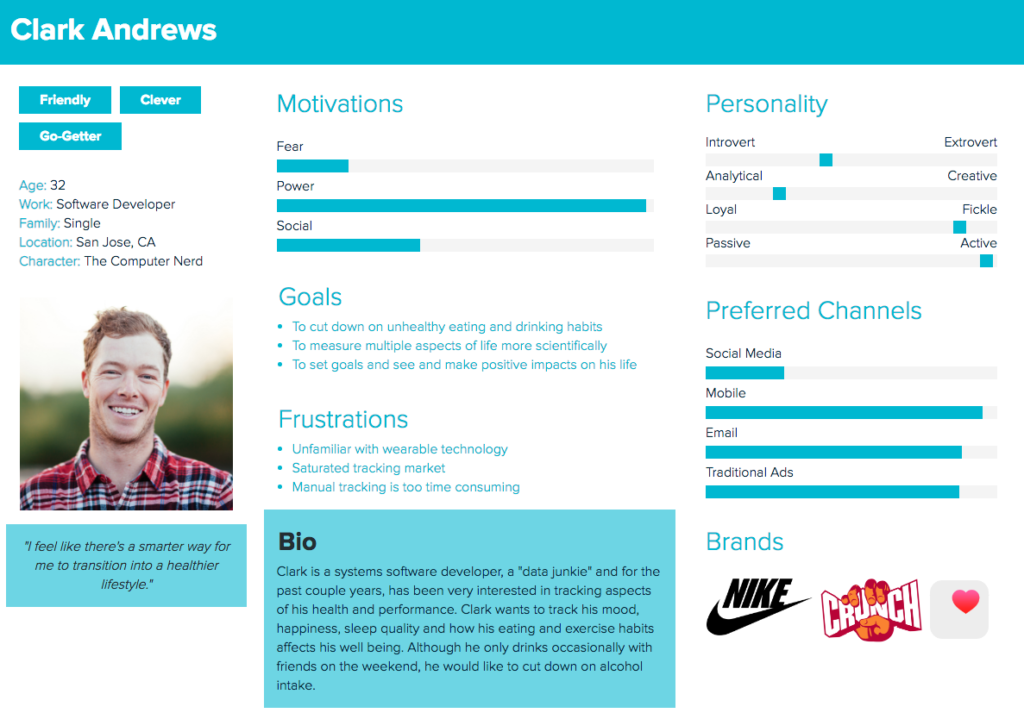
2.
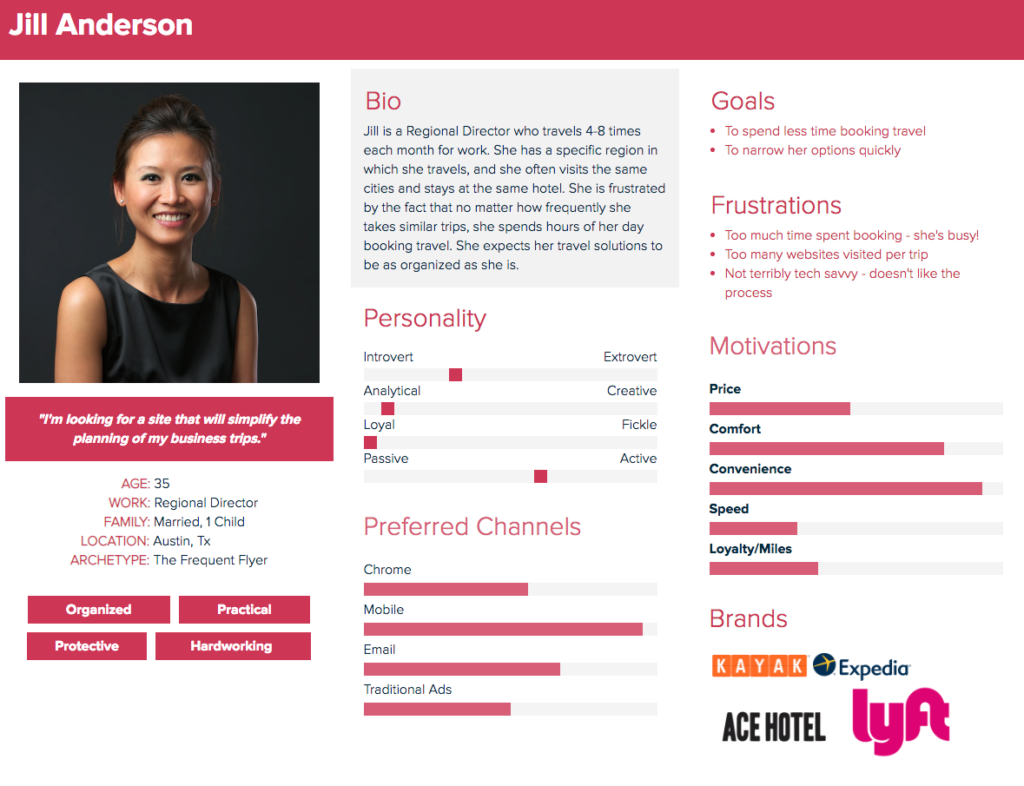
3.
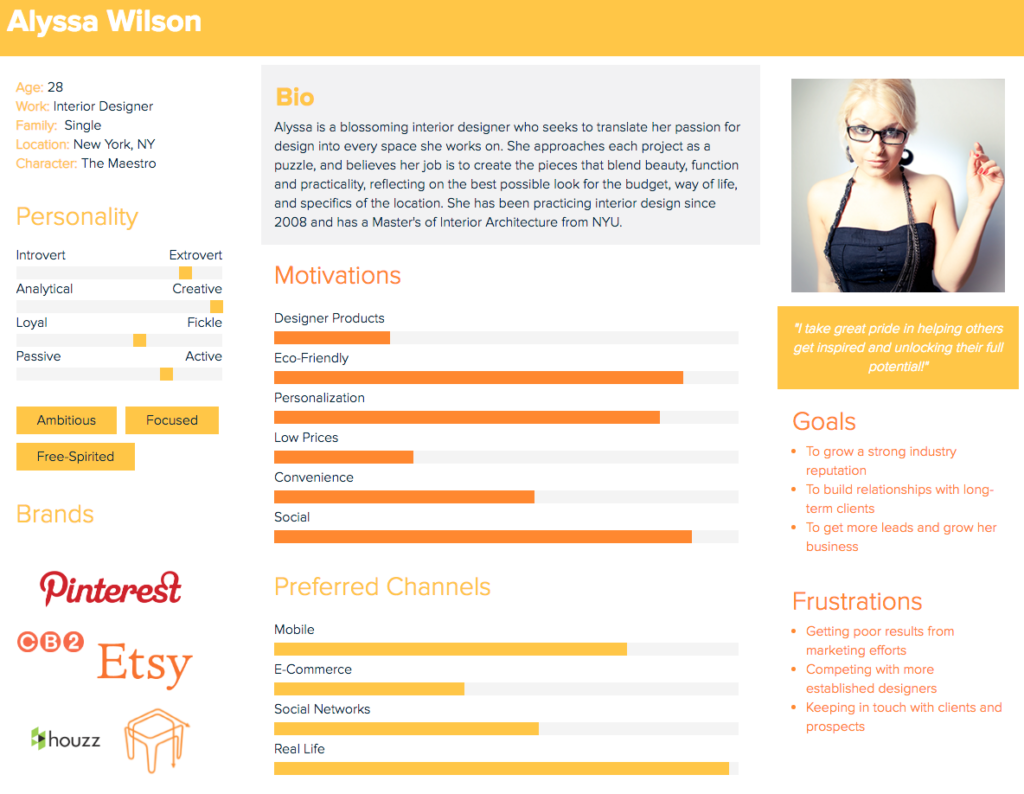
4.
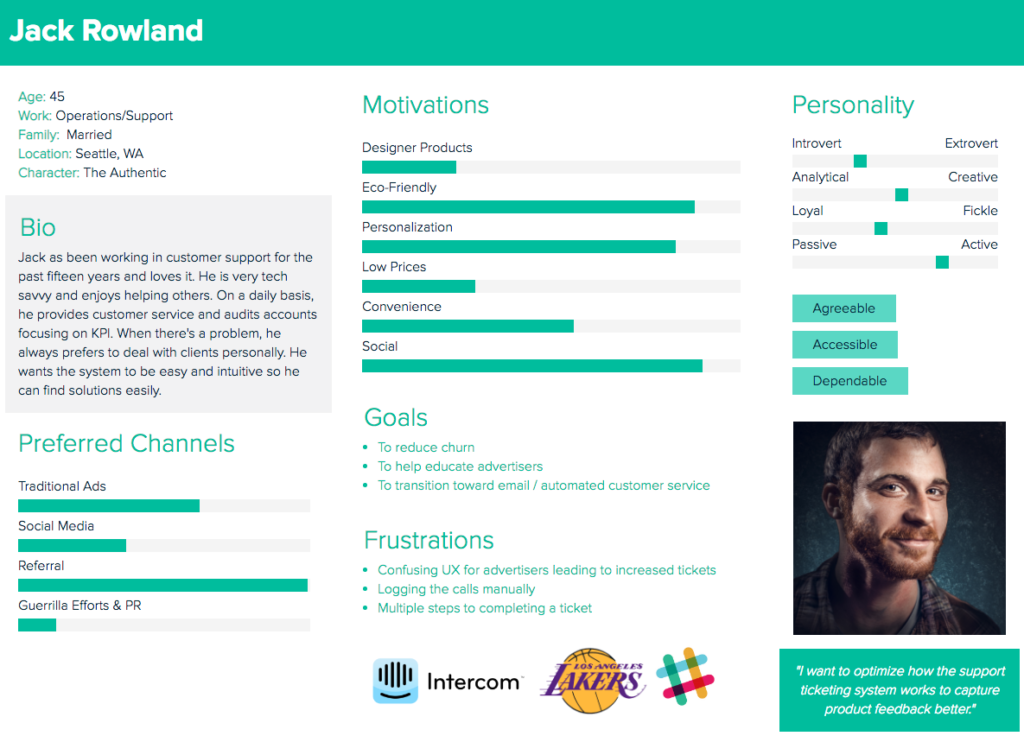
5.
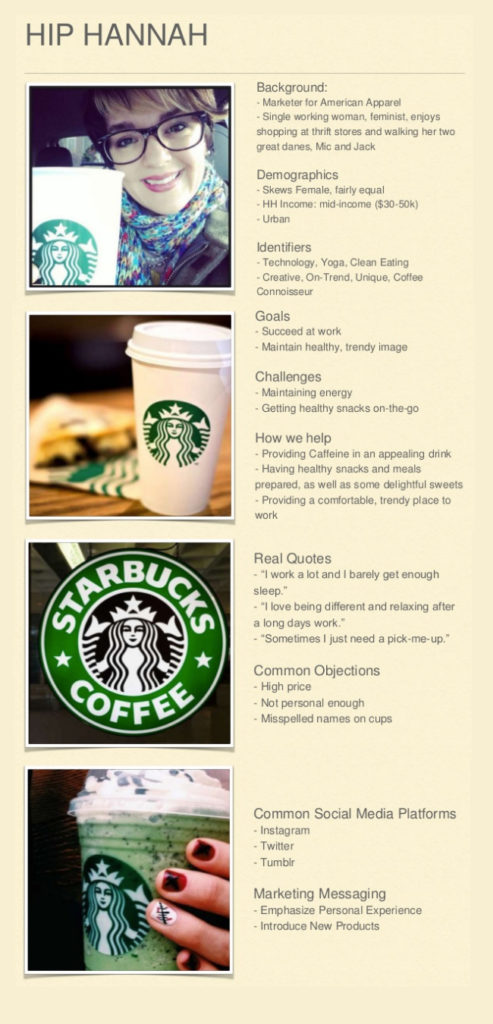
6.
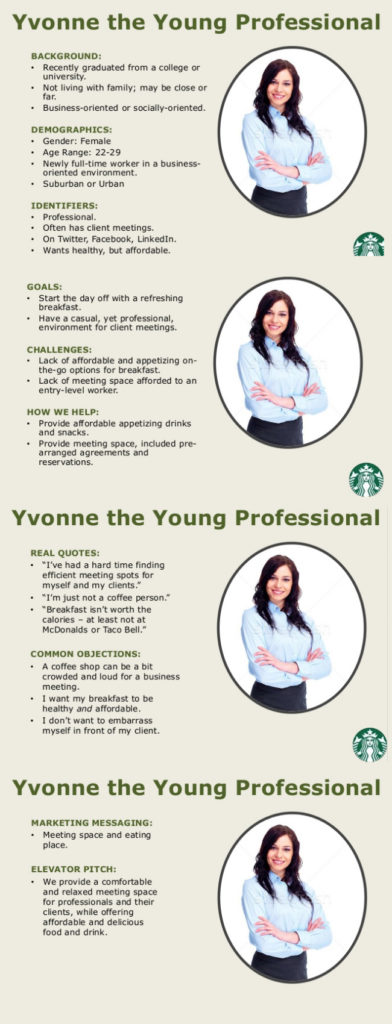
7.
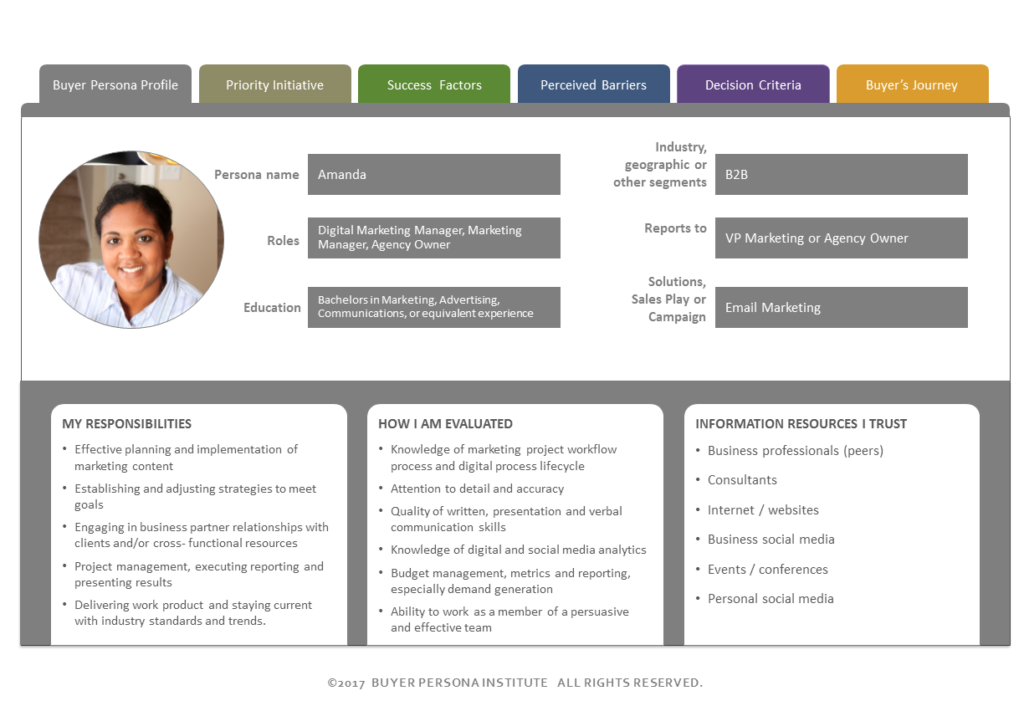
8.

9.
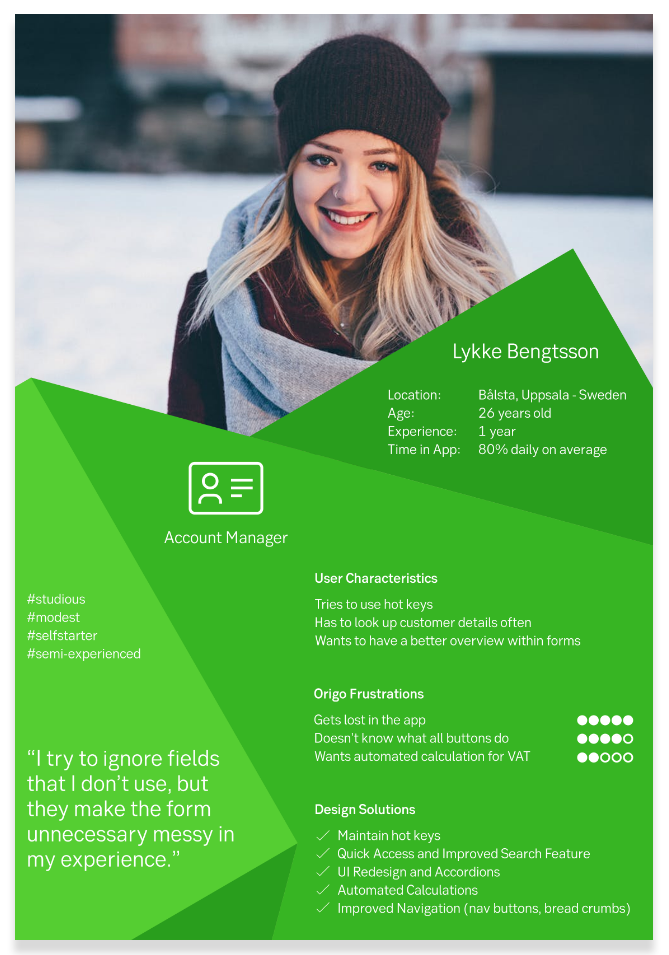
10.
